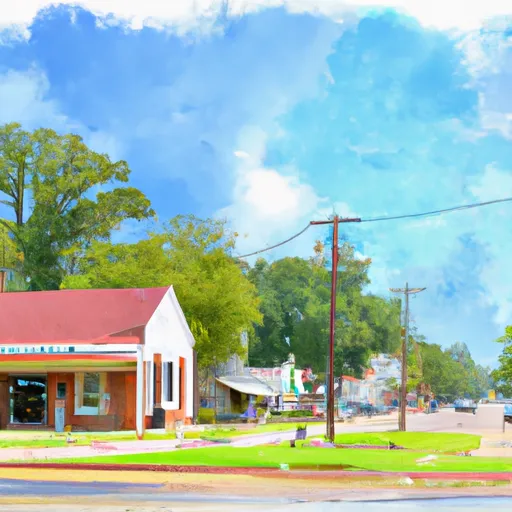°F
°F
mph
Windspeed
%
Humidity











Merigold, Mississippi is a small town located in Bolivar County, in the Mississippi Delta region. The climate in Merigold is warm and humid, typical of the southern United States. Summers are hot, with temperatures often reaching the high 80s to low 90s Fahrenheit, while winters are mild with average temperatures in the 50s. The area experiences moderate rainfall throughout the year.
Merigold benefits from its proximity to the Sunflower River, which flows through the town. The river provides a valuable source of water for irrigation and supports a diverse range of aquatic life. The presence of the river also offers opportunities for outdoor recreation, such as fishing and boating.
Additionally, Merigold is surrounded by rich farmland, making it an ideal location for agriculture. The fertile soil and warm climate allow for the cultivation of crops such as cotton, soybeans, and corn. This agricultural setting also provides opportunities for outdoor enthusiasts to explore the scenic countryside and enjoy activities like hiking or bird-watching.
In conclusion, Merigold, Mississippi offers a warm and humid climate, a rich agricultural landscape, and recreational activities centered around the Sunflower River and the surrounding countryside.
Weather Forecast
Merigold receives approximately 1324mm of rain per year, with humidity levels near 87% and air temperatures averaging around 18°C. Merigold has a plant hardyness factor of 8, meaning plants and agriculture in this region tend to thrive here all year round.
Regional Streamflow Levels
5,940
Cubic Feet Per Second
182
Cubic Feet Per Second
220
Cubic Feet Per Second
1,690
Cubic Feet Per Second
Nearby Camping
| Camping Area | Reservations | Toilets | Showers |
|---|---|---|---|
| Deer Leap | |||
| Leroy Percy State Park | |||
| Tickfaw State Park | |||
| North Rec Composite | |||
| Little Sunflower River | |||
| Rocky Springs - Natchez Trace Pkwy |



